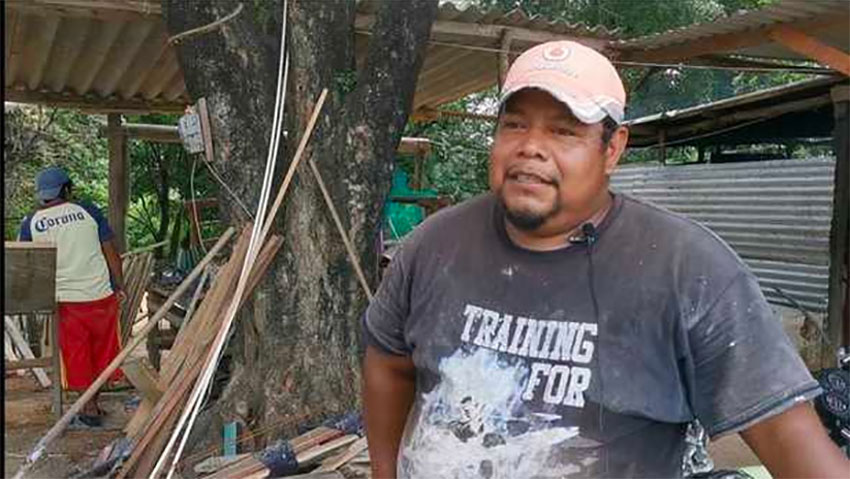Rebuilding in Chiapas after the 8.2-magnitude earthquake that devastated the region three years ago has been slow going.
The temblor, one of the most intense in Mexico’s history, struck southwest of Pijijiapan, a coastal town half-way between the boundary with Oaxaca and the Guatemalan border, and was felt by 50 million people.
The September 7, 2017, quake killed 98 people and injured more than 300. Damage to homes and other buildings was extensive and, according to one estimate, only 40% of the damage has been repaired.
Hundreds of homes in the municipality of Jiquipilas were demolished including that of Amanda Robles, which suffered extensive material damage as the earthquake knocked down its adobe walls and collapsed the roof in its entirety.
Robles moved into a makeshift shelter she built by affixing a tarp to mango trees, later adding a tin roof, and remained there for nearly a year.

A portion of federal disaster relief funds to rebuild homes arrived in 2018, and President López Obrador has promised to complete the rebuilding process and build better homes by using a design meant to withstand earthquakes.
But the coronavirus pandemic has complicated the rebuilding process.
The company charged with the rebuilding Robles’ home stopped working in April. Although the house remains unfinished — there are no doors or windows — she decided to move back in anyway. Despite being surrounded by dust and bags of cement, Robles says she is happy and thankful to the president for his support.
Others are not as satisfied.
Ocaña says that despite having documentation that his home was destroyed, he has yet to receive compensation. The federal government sent in heavy equipment to complete the teardown of three homes, but that’s all they have done.
Toledo says he has appealed to different government agencies at the state and federal level, but authorities now tell him that he is not on the list of beneficiaries for aid, and he has been forced to move in with his mother-in-law.
Like Nahúm, some 30 families in the community of Cuauhtémoc continue to wait for the support of the federal government after three years. They are living in makeshift homes, a situation made more difficult by the rainy season.

In Chiapas, a total of more than 46,000 homes were damaged, of which 14,000 were total losses in the municipalities of Villaflores, Cintalapa, Arriaga, Jiquipilas and Tonalá, where at least 70 percent of the earthquake’s damage was concentrated.
Today, estimates the former head of the Unión de Ejidos, repairs to homes, schools, churches and other buildings that sustained earthquake damage have advanced by only 40%.
A quake measuring 4.3 on the Richter scale was felt in Pijijiapan on September 3, 2020.
Source: Milenio (sp), Alerta Chiapas (sp)
